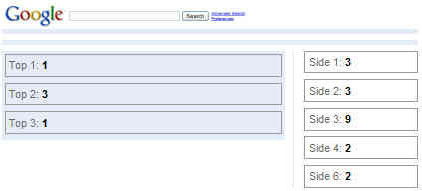Average Position occupies an important place in the mythology of paid search.
Many people covet or chase higher positions, and there are several possible reasons:
- The assumption that ads in higher positions get more clicks simply because they’re in higher positions.
- As we all know ‘higher is always better’ – especially when it costs more.
- And of course, eye tracking studies prove, um, er, that people look higher more often.
(The empirical and anecdotal evidence I’ve seen suggests that the power of higher positions is much less than most people seem to imagine. In a future post I’ll go into this in great detail. This is not the real subject of this post.)
As a result, there is a lot of attention paid to the Average Position metric. And a LOT of money is spent on upward bid changes made because of the number this metric reports.
So how good is this number? Probably not very good.
Let’s take one tiny little case study to demonstrate.
The keyword is ‘cat treatment’. And on Saturday Jan 3rd it produced about 25 clicks in one of our accounts. The average position for the term (in broad match) was listed as 4.55. This is the average of all the positions in which it appeared during the 1543 impressions it enjoyed that day.
![]()
Now be honest, despite all you know about averages (including the fact that it could have appeared in position #1 760 times, and in position 8 783 times) when you see that 4.55 was the average it makes you think it spent the day bouncing between position 4 and position 5. Right?
But did it?
Let’s look at Google Analytics’ handy Keyword Position report for this keyword on that day. This shows the position the keyword was in when it earned its 25 clicks.

Yowza! This keyword covered more ground than Paris Hilton in NYC on Saturday night. (I always wanted to see how much Google traffic a single Paris Hilton reference caused.)
It was in all three top positions, and everywhere on the right side from position 1 to position 6.
Keep in mind that this is a map of clicks, not impressions. So maybe the impressions did cluster closely around the 4.55 average and the few stray impressions way up to top 1 and down to position 6 just all got clicks. Or maybe the actual impression distribution was extremely broad and the 4.55 average, while it is true, is really not useful to us in terms of analyzing keyword performance or making bidding decisions.
At this point only two things are really clear;
- We really need better information. If the search engines won’t provide the actual impression and click position distributions, and/or make the the position-at-time-of-click a macro that can be delivered in the target URL, they should at least provide the standard deviation for the average position so we have some idea of what it really means.
- We should resist the urge to put much faith, or make too serious of decisions, based on the reported Average Position of any keyword.



